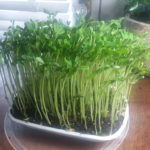Are Mushroom Kits Worth It? I Try It.
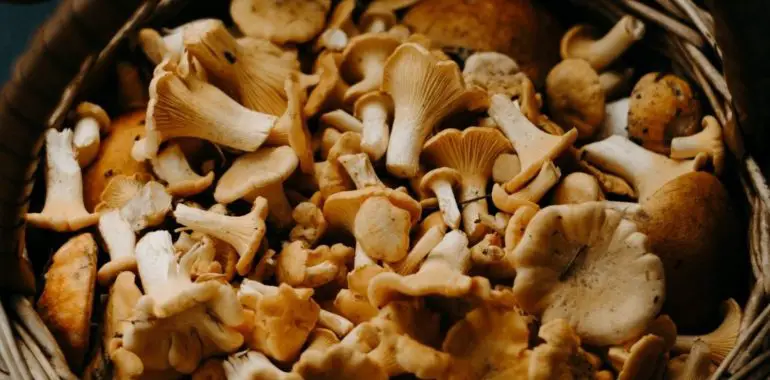
Are Mushroom Kits Worth It? I Try It.
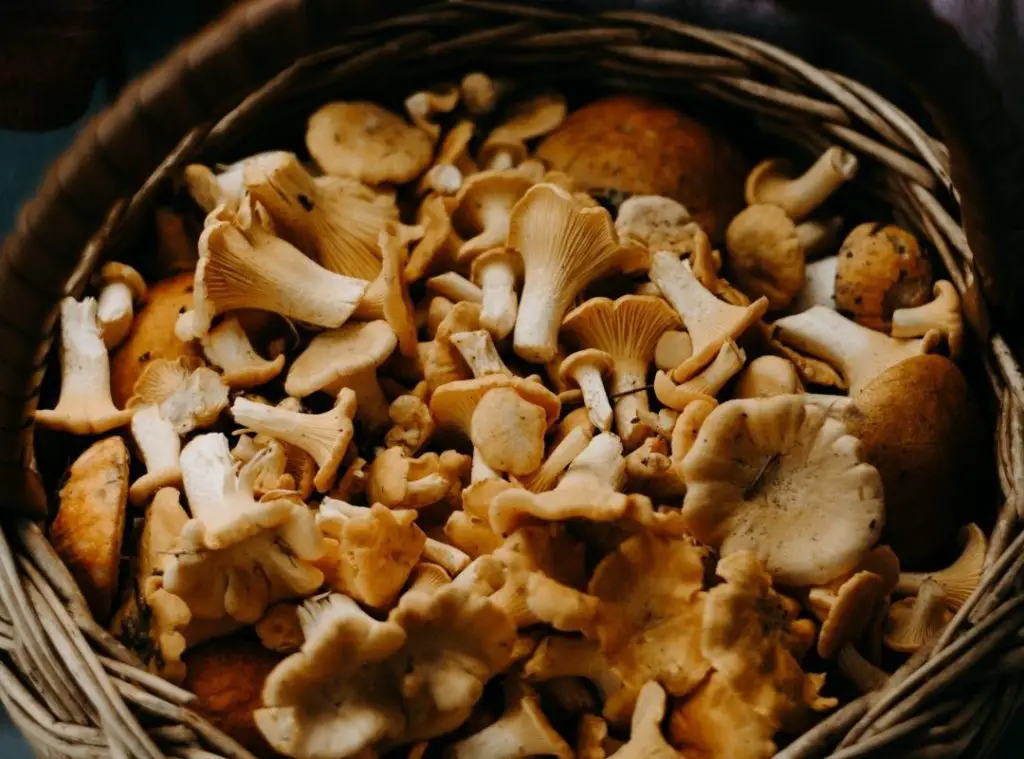
During the early days of the pandemic, it seemed like growing your own food was all the rage. I saw these mushroom growing kits mentioned by people and I was pretty curious to try them but never got around to it until now. My S.O. loves mushrooms and it seemed like a cool idea to grow your own. I decided to see if mushroom kits are worth it in terms of the cost and time involved. So come along with me while I try it out!
What is a Mushroom Kit?
First of all, I decided to start with the easiest way to grow mushrooms – from a kit. There are other methods for growing your own mushrooms, like drilling holes into a log and inserting “spawn plugs” into them. Or you could get even more hands-on and create your own substrate and inoculate it with mycelium, etc. But since I know nothing about growing mushrooms and I want to try the most foolproof method first, I went with buying a couple kits.
I actually found a seller who is in the same state as me (Ohio), so I decided to give him my business. He calls himself Mushroom Man and has plenty of helpful videos on his website. Certain types of mushrooms can’t be shipped this time of year (March) due to the cold, but I was able to get a shiitake kit and a white oyster mushroom kit.
The cost for most mushroom kits seem to run about $25. With shipping, these kits cost me a total of $62.80. Oyster and shiitake mushrooms cost about $10-$12 per pound, so to make this endeavor cost effective, I’d need to get about 5-6 pounds of mushrooms from the two kits combined. It’s supposed to be possible to get a second harvest after the first one, so we’ll see how it goes. Regardless, I think this will be fun to try.
The kits arrived very promptly within a few days and look like this:
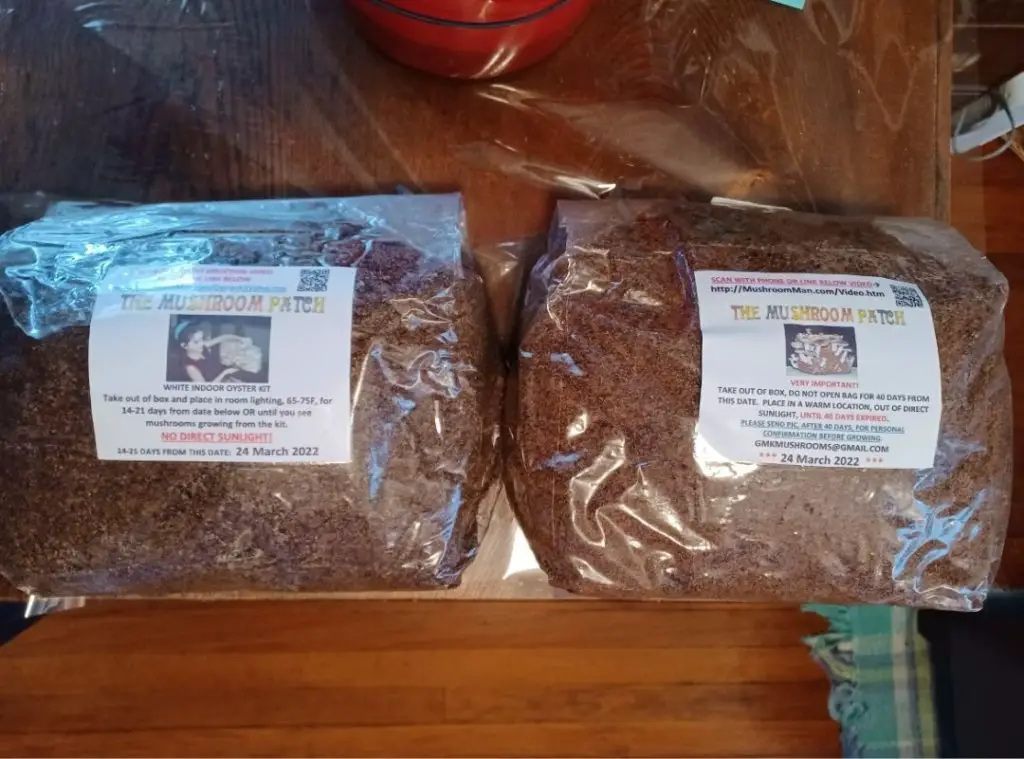
The white oyster kit is on the left and the shiitake is on the right. As you can see, there are some instructions on each, along with a QR code that you can scan for instructional videos specific to your variety of mushroom. (I was unable to get the QR code to work, but I still found the videos on the website.)
From what I understand, these kits are basically made up of sawdust inoculated with the mycelium of each specific mushroom variety. For now, there is nothing I need to do with these kits but allow them to sit at room temperature for a while and out of direct sunlight. After a certain period of time (14-21 days for the oysters, 40 days for the shiitake), I will take further steps to hydrate the kits and get the mushrooms to start growing.
So for now I have set them on a shelf in my office where they will get some light from the room, but no direct rays. They need to be out of the box to get some air. There is a vent in the plastic bag to allow some oxygen in:
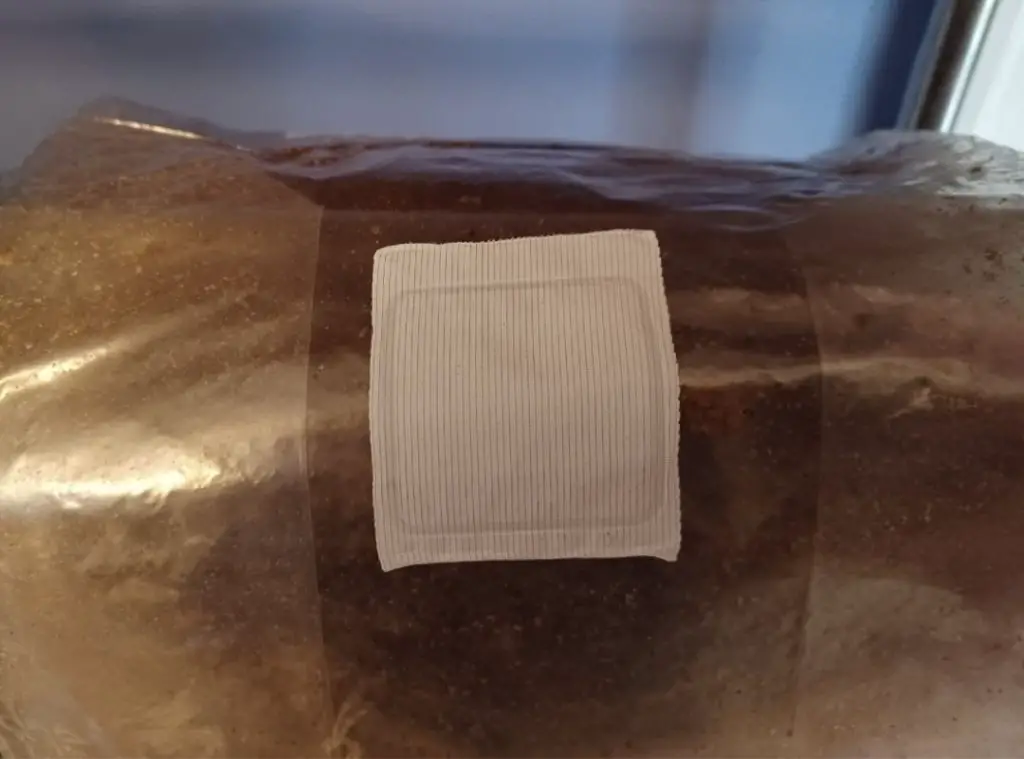
Update: My Mushroom Kit Results
I’ll just cut right to the chase and say that my results from these kits were pretty disappointing, and I definitely followed all the instructions carefully. The shiitake kits produced no mushrooms at all, and the oyster kit did produce some mushrooms, but certainly not enough to justify the cost. Read on for a description and photos of the process:
Growing White Oyster Mushrooms From a Kit
The white oyster mushrooms had a shorter grow time frame than the shiitake, so I started to see active mycelium growth right away. After a few days, it looked like this:
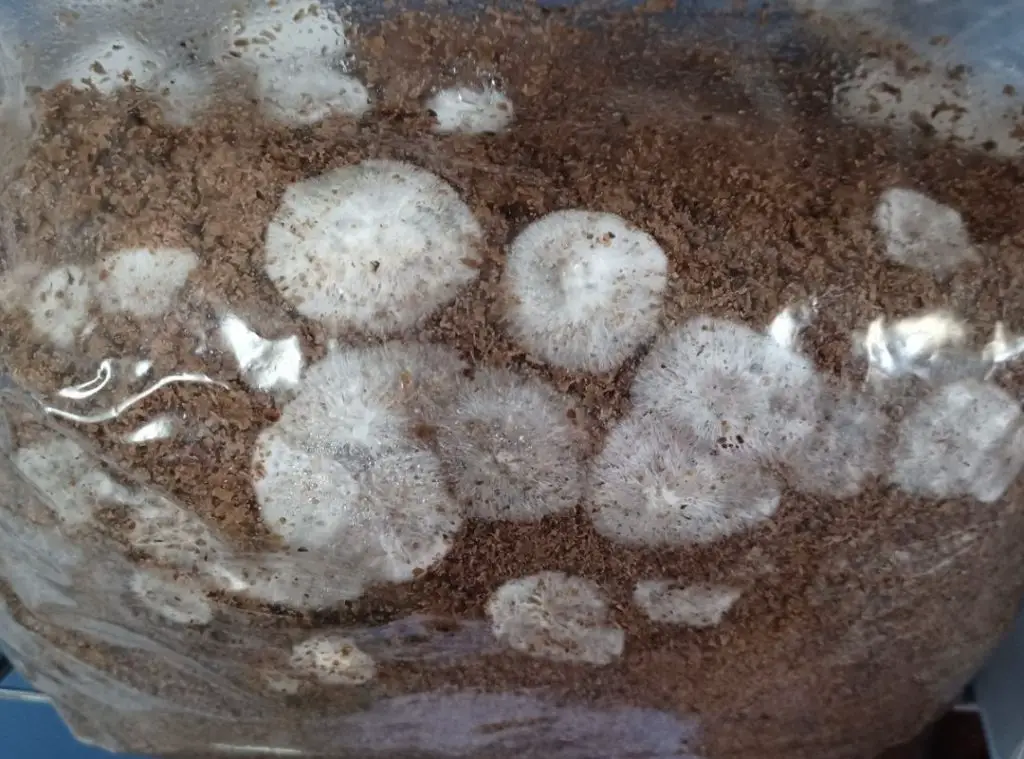
I was excited to see how quickly it was growing. Two weeks after I received the kits, the white oyster mushroom kit looked like this:
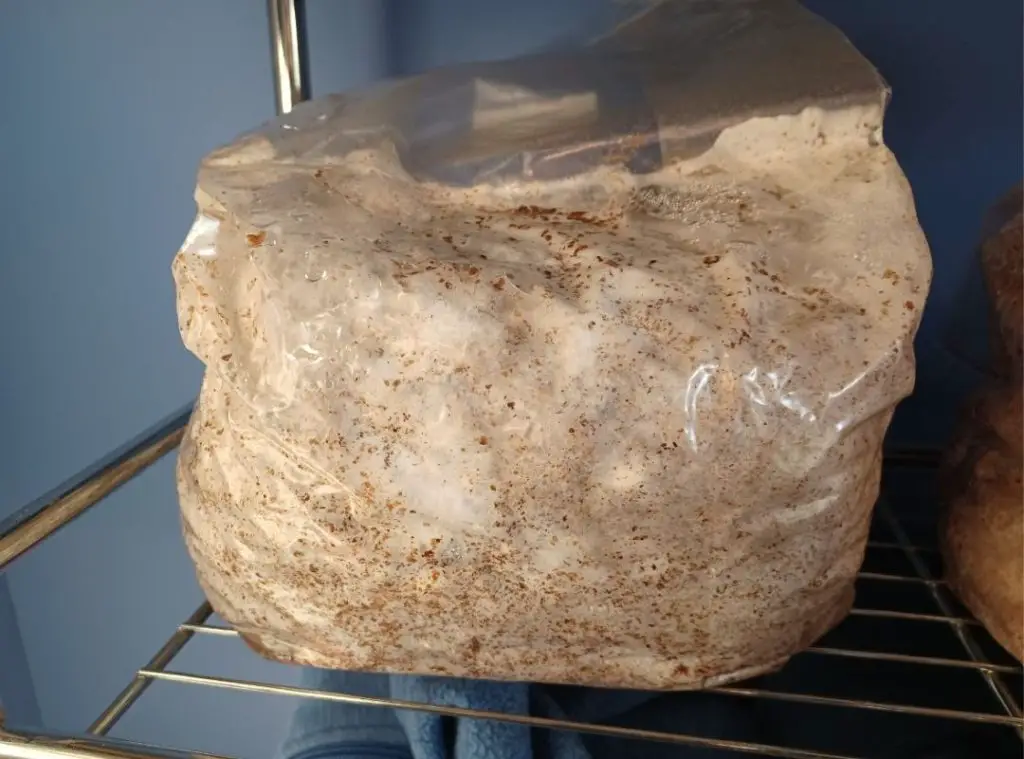
At that point, once the kit was full of mycelium, I was supposed to cut an X into the front of the kit and put that opened side down into some clean, non-chlorinated water to soak for about 24 hours. Then the kit is placed on its side again, sitting propped slightly above a plate of clean water for humidity.
I followed all the instructions carefully, including to use water that I had boiled and allowed to cool, sterilized my hands and any tools I used, set the kit on top of a couple jar lids so that it wouldn’t be directly sitting in the water, and keeping it out of direct sunlight at all times. I had a spritzer to occasionally spritz a bit of water on the opening and the mushrooms as needed.
Soon the kit looked like this:
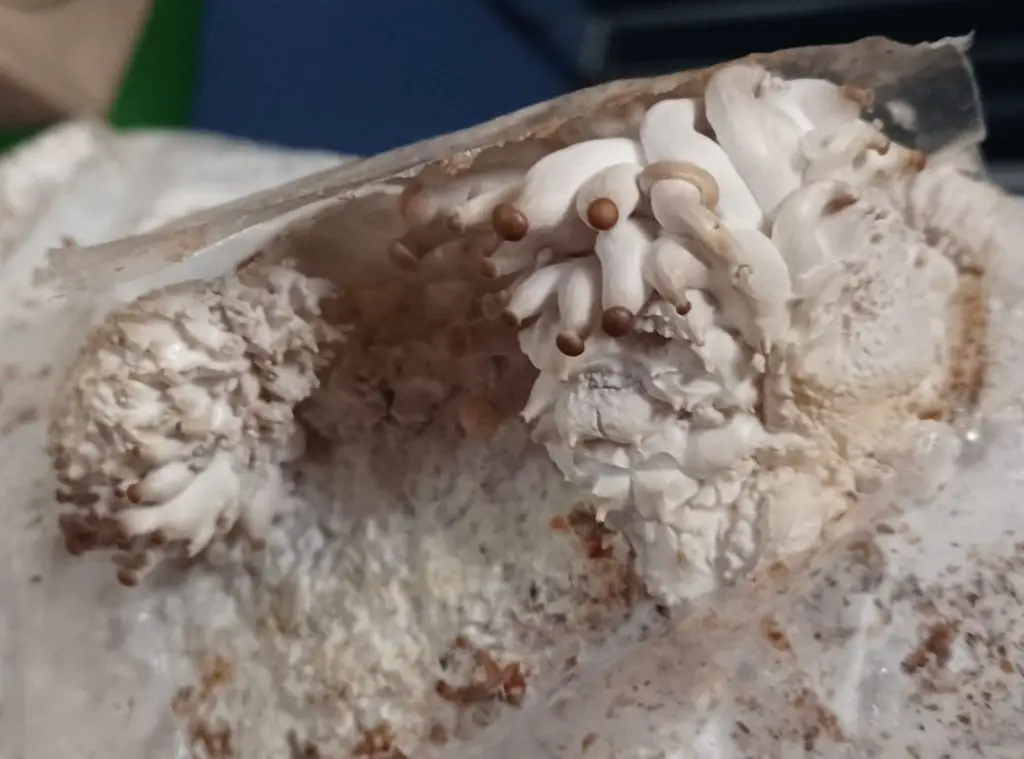
You can see the mushrooms beginning to push their way through the opening. Over time, many of the tiny mushrooms merged together to form larger ones. At about the one month mark, my mushrooms looked like this:
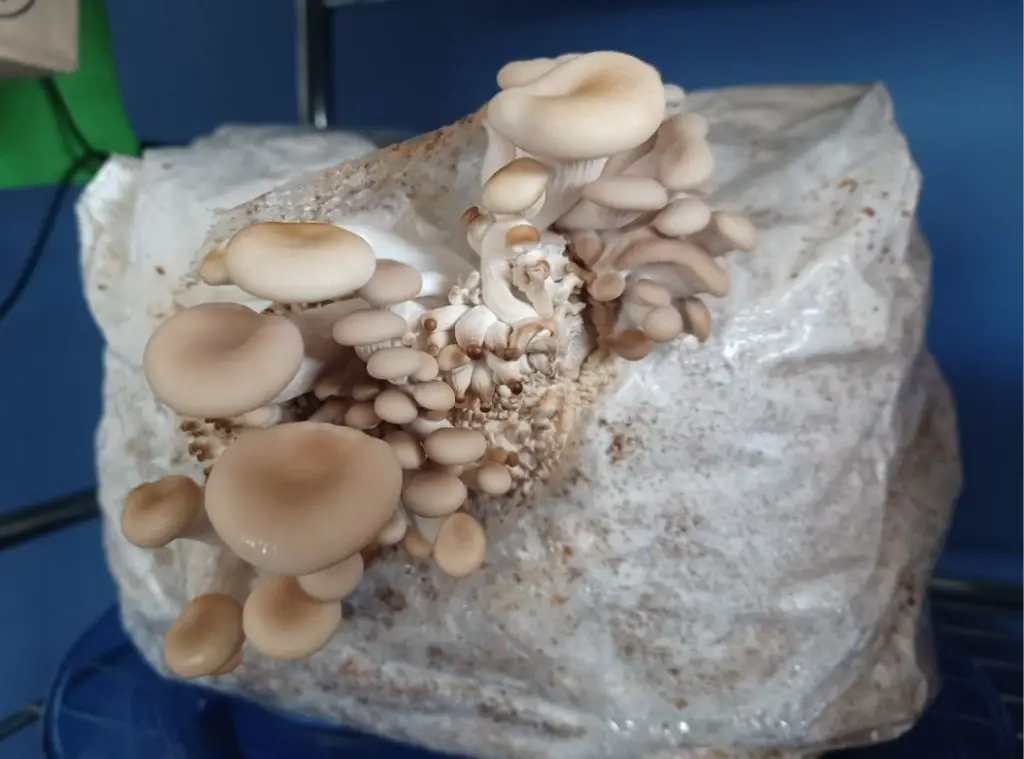
I wasn’t sure how long to let them go, but after a few more days it seemed like the larger ones were getting a bit dried out around the edges, so I harvested them. The Mushroom Man recommended going ahead and removing all of the mushrooms at once and not leaving the small ones, otherwise the kit can become contaminated for your second growth.
I weighed the mushrooms I got, which came to 5.60 ounces. I don’t know if we didn’t cook them properly or if I left them growing too long, but they came out rather chewy when we cooked them up with some pasta.
Anyway, not a great haul considering the cost of the kit. I was hopeful that I could get a second or even third flush of mushrooms. But that was not to be. At first I seemed to be getting a second round of mushrooms, but then they stopped growing when they were still too small to do anything with:
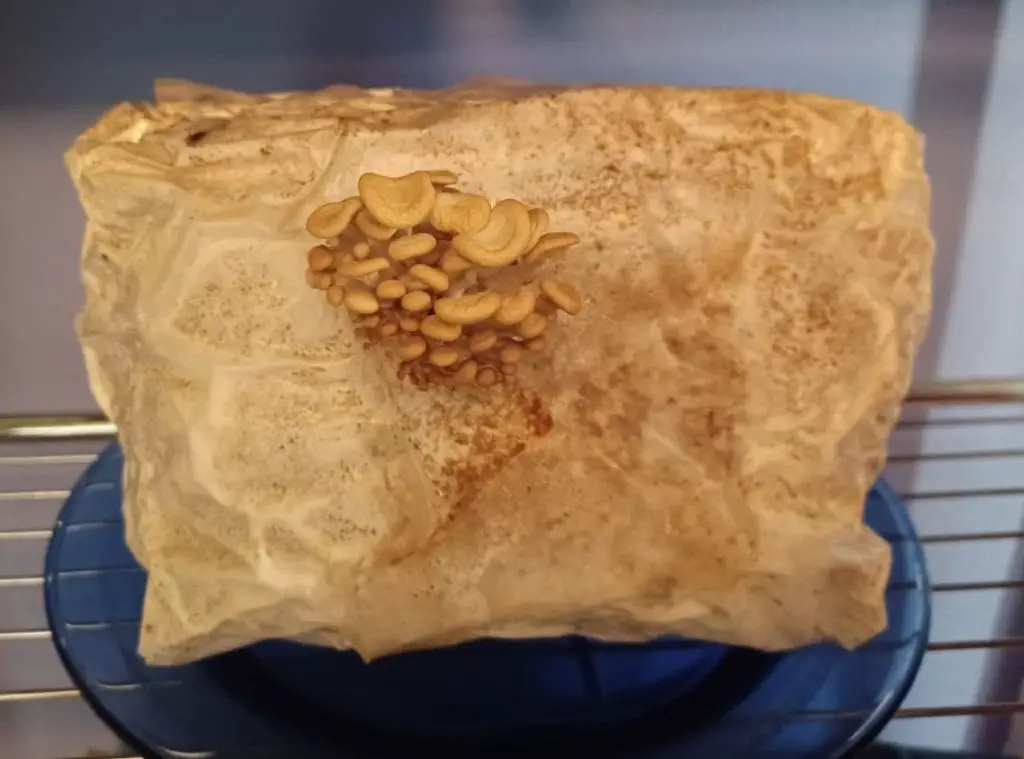
This was as big as they ever got and they totally dried out as I kept waiting for them to grow some more. Oyster mushrooms at my local grocery store are currently $8.99 per pound (which is 56 cents per ounce). Which means I got about $3.00 worth of mushrooms from a $30 kit. So the oyster kit was a bit of a fail. But not as much of a fail as the shiitake kit.
Growing Shiitake Mushrooms From a Kit
First off, shiitake mushrooms are apparently trickier to grow than oysters and some other varieties, and if I had known that, I probably wouldn’t have chosen them, because it didn’t go well.
Shiitake are slower growing, so I had to wait about 40 days just leaving them in the bag out of direct sunlight before taking the next step. I was also supposed to send a picture to the Mushroom Man to have him verify whether it was ready to proceed, which I did. When I was ready to move on, the kit looked like this:
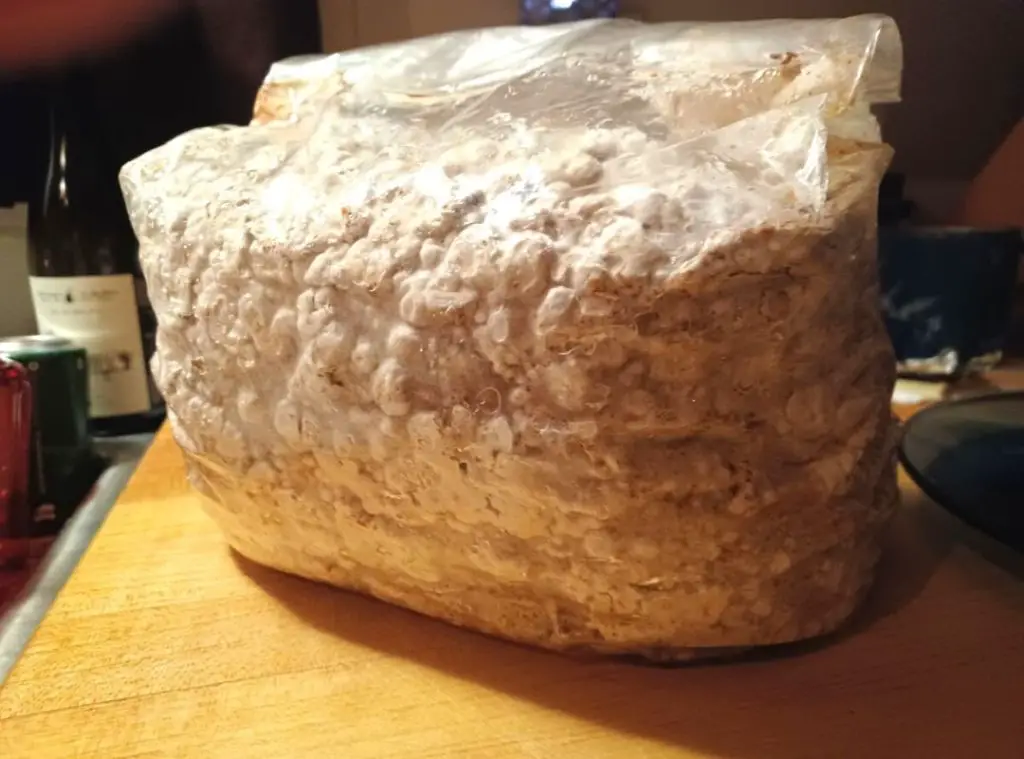
I then had to cut the bag open, fill it with cold water to soak the block and allow the entire kit to sit for 24 hours in the refrigerator.
The next day, I dumped out the water and cut away the bag, except for a bit around the base of the block, about an inch, to keep the mushrooms from trying to grow into the water on the plate. Like the other kit, I again set it on a plate of clean water, propped up by a couple jar lids. But for shiitake, they also require a plastic bag as a humidity tent, which was provided.
Over the next few weeks, I spritzed the inside of the tent with water as needed to ensure it was kept humid. I was supposed to hopefully start seeing some mushroom growth around day 10, but was also told that shiitake can be finicky and may take a couple extra weeks and to be patient. The block turned dark brown as it was supposed to, but I waited and waited and no mushrooms ever sprouted. Here is what it looked like after 45 days in the tent and I finally gave up on it:
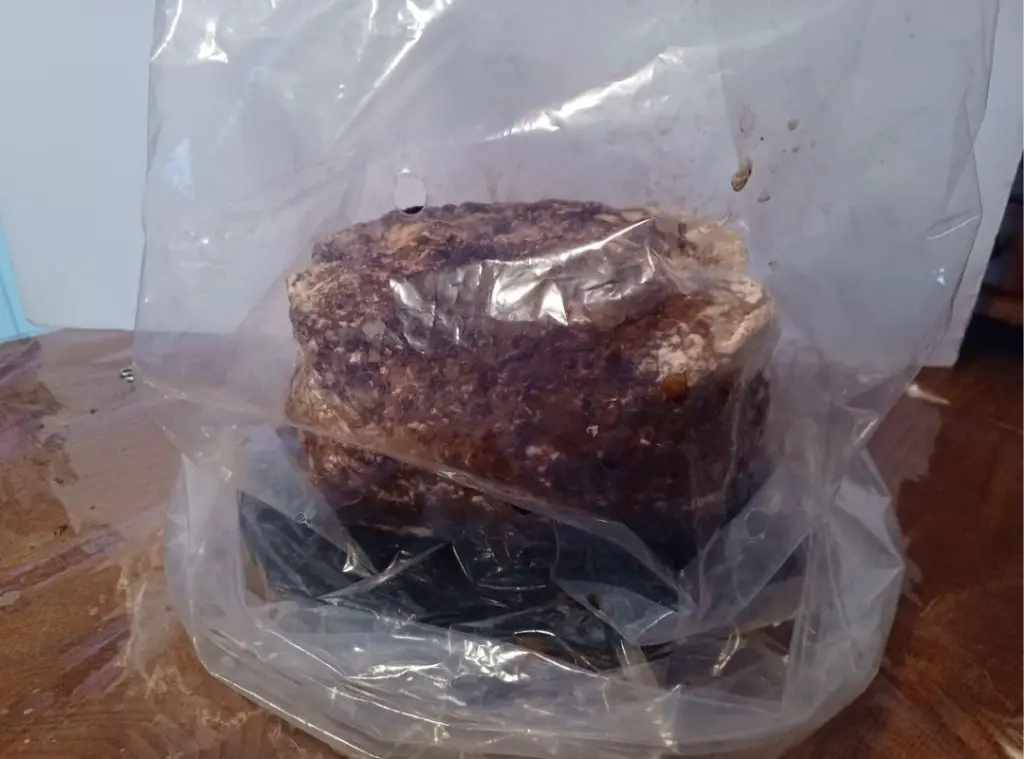
I threw it out in my compost bin. The guy who sold them did have some kind of guarantee and would probably have sent me a new one, but frankly I just didn’t want to deal with it again.
Were the Mushroom Kits Worth It?
It was pretty cool to watch the oyster mushrooms grow, but strictly in terms of monetary value, no way. Would I do it again? Probably not. I think I expected these kits to be pretty foolproof, but they are actually rather tricky. So just keep that in mind if you decide to give it a try.
Updated 7/8/2022, Originally published 3/22/2022


